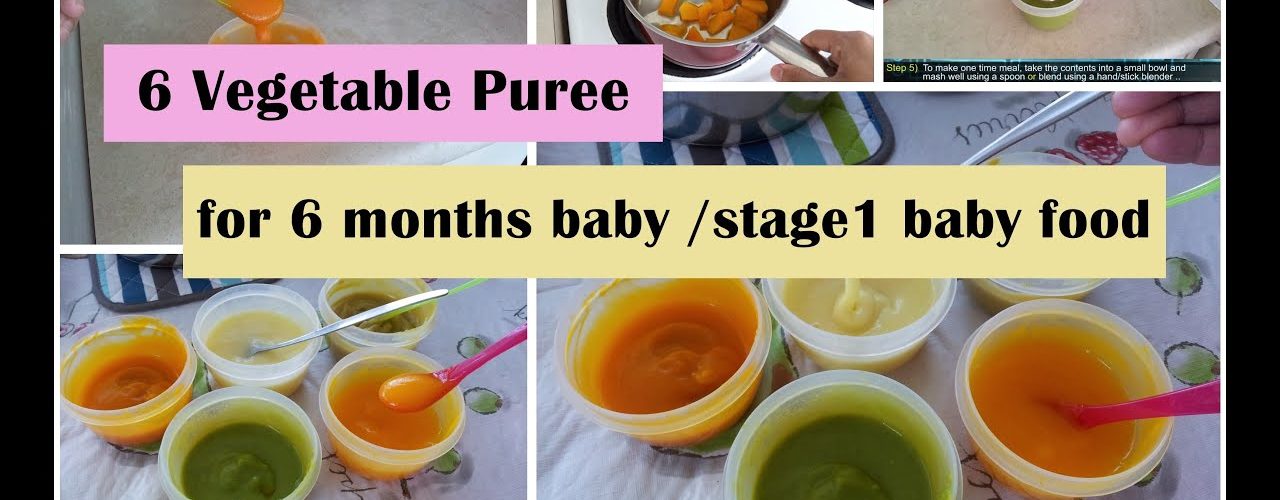Making your own baby food may sound tedious, but it is a great way to control what your baby eats and how it is prepared. Parents and caregivers can simply utilize whole, nutritious foods that they consume on a daily basis and make them into a healthy meal for baby by following a few simple steps.
Preparation
The first to making homemade baby food is researching the process and gathering supplies. Many different methods are available, all of which produce acceptable results. In general, this task will require a blender or baby food processor, a spatula to scoop food out of the blender, freezer-proof containers to store baby food, a baking sheet, an oven, and a pot for vegetables that require steaming. While virtually all baby food options, such as fruit, produce, and meat, can be steamed or boiled, some individuals choose to bake these items, as well.
Selecting Vegetables
In general, it is a good idea to follow in line with vegetables that current baby companies produce on a mass level. Items such as carrots, squash, sweet potatoes, green beans, and peas are easy on a baby’s digestive system. Whereas other vegetables, such as broccoli and cauliflower, can cause excessive gas and bloating in a baby’s immature body. Though it can be beneficial to experiment with different tastes and textures, it is important to identify which foods can be difficult for babies to digest.
In addition, many parents/caregivers choose to make baby food at home, due to the wide array of organic produce that is not offered in traditional baby food. In order to keep pesticides to a minimum and protect babies from contaminated food sources, organic produce is optimal. In certain circumstances, such as food that is grow above ground or near the soil’s surface, organic produce is crucial.
Preparing Selections
Once the produce has been selected it is now time to begin preparation. Washing all product is the initial step. Creating a bath of vinegar and water can help get all of the residue and germs off the produce before it is cooked. Removing the skin, seeds, and stems is also recommended to eliminate any choking hazards. After the produce has been washed and prepared, it can then be placed on a baking sheet. Most produce cooks thoroughly at a temperature of 350 degrees for 15-20 minutes. In order to ensure that the vegetables are soft enough to puree, you may poke them with a fork to determine tenderness. After the vegetables are cooked and tender, remove them from the oven and allow them to cool completely.
Puree Techniques
After the vegetables have cooled, it is now time to create a puree. A food processor, blender, or baby food processor are all sufficient appliances that can create a desired texture. Simply put the baby food into the appliance, without skin, and puree. For those who desire a thinner consistency a bit of water may be added, as well. Once of the puree has reached the desired thickness, stop the blending process and proceed to packaging. For your convenience we have included a video that demonstrates the ease of preparing baby food at home.
Storage
There are many different methods of storage that can be utilized to meet the needs of various families and their demands. Purees can be poured into ice cube trays for single serving meals or stored in small freezer containers. Ice cube trays may be covered with plastic wrap or foil to prevent freezer burn or contamination from other freezer items.
Storing baby food is simple once one understands the basic guidelines. For food that will be eaten within the day or the following day, storage in a refrigerator is fine. The FDA limits refrigerator storage to this short amount of time, because bacteria can grow quickly in prepared baby food. In addition, the refrigerator temperature should register at or below forty degrees Fahrenheit. For those that plan on using baby food in the future, freezer storage is recommended. Baby food can be safely stored in a freezer for up to two months when it is regulated at zero degrees Fahrenheit.



